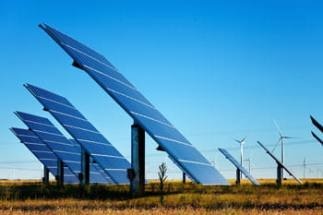Nov 29 2019
According to a new issue brief by a specialist from the Center for Energy Studies at Rice University’s Baker Institute for Public Policy, the use of a framework based on vulnerability, risk, and offsets provides critical insights for assessing the security of an energy system in transition.
 Image Credit: 123RF.com/Rice University
Image Credit: 123RF.com/Rice University
“Energy Security and the Energy Transition: A Classic Framework for a New Challenge” is written by Mark Finley, fellow in energy and global oil at the Baker Institute.
Policymakers in the U.S. and around the world are grappling with how to understand the security implications of an energy system in transition—and if they aren’t, they should be. Recent attacks on Saudi facilities show that oil supply remains vulnerable to disruption. New energy forms can help reduce vulnerability to oil supply outages, but they also have the potential to introduce new vulnerabilities and risks.
Mark Finley, Fellow in Energy and Global Oil, Baker Institute for Public Policy, Rice University
For the past 50 years, the United States and its allies have spent forging a strong domestic and international response system to minimize risks to oil supplies. However, analogous arrangements for other energy forms remain inadequate, Finley stated. His study provides a framework for evaluating energy security based on an assessment of vulnerability, risk, and offsets.
This method has been a beneficial tool for evaluating oil security, and it can be applicable for evaluating energy security in an energy system in transition, Finley explained. The framework’s first element is vulnerability, which evaluates to what extent the U.S. and global energy systems are exposed to a shock, stated Finley.
“This could include the size of the energy input to the economy (in absolute terms and especially in financial value), the degree of substitutability and the concentration in key sectors, such as the importance of oil in transport,” Finley noted.
Vulnerability has loomed in public perceptions as an economic consideration, experienced as either price spikes and/or physical shortages. Other vectors of vulnerability can include potential adverse effects from a disruption for diplomatic, strategic or military objectives. In recent years, environmental objectives—especially climate change—have emerged as increasingly important to assessing vulnerability.
Mark Finley, Fellow in Energy and Global Oil, Baker Institute for Public Policy, Rice University
Furthermore, risk evaluates the probabilities of a shock, remarked Finley. “Considerations must include not only the probability of a disruption but also an assessment of the potential magnitude and duration,” Finley wrote. “A large but brief shock (such as the one seen recently in Saudi Arabia) may be less disruptive than a small but long-lasting one.”
Finally, offsets are the capacity and timeline to handle a shock, noted Finley. “This could include the ability to increase production elsewhere, draw supply from inventories, switch to other energy sources and/or reduce demand by conserving energy,” he wrote.
The purpose of these interventions is to cushion the impact of the shock while giving market—both producers and consumers—a chance to respond in a more orderly fashion. Energy security policy can aim to address any of these dimensions. For example, vulnerability can be reduced by diversifying the fuel mix, risk can be managed via diplomacy or military power and a strategic stockpile can be used to offset lost supply.
Mark Finley, Fellow in Energy and Global Oil, Baker Institute for Public Policy, Rice University
Finley added, “The domestic and international assessment of—and policies aimed at improving—energy security must evolve along with the energy system. Growing reliance on natural gas and renewable energy help mitigate vulnerability to future oil supply disruptions.”
Finley concluded, “But with these alternatives playing a much larger role in the global energy economy, and with mining of base metals and manufacturing of new energy components concentrated abroad, these same dynamics also raise the prospect of new vulnerabilities and risks that must be understood and managed. Moreover, a robust set of capabilities and institutions has been built up over the past 50 years for managing oil supply risks, but such capabilities are limited for other energy forms.”
According to Finley, data collection “is always a good place to start; cooperative efforts to systematically gather information on the relevant indicators for new energy forms is in its infancy. The framework of assessing energy security by analyzing vulnerability, risk, and offsets—and building domestic and international policies to address these three factors—can be a useful approach in tackling this emerging challenge.”